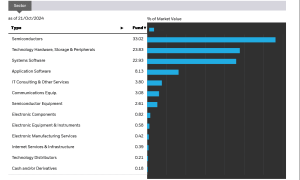FTSE 100 retailer Marks and Spencer (LSE: MKS) has risen 79% from its 30 October 12-month traded low of £2.12.
However, just because a share has gained a lot does not mean there is no value left in it.
How much value is left in this stock?
My starting point to see if this is true here is to assess its key stock valuations with those of its competitors.
On the price-to-earnings ratio (P/E) Marks and Spencer currently trades at 18.1 against a peer group average of 33. So it looks very cheap on this basis.
The same is true of its price-to-book ratio of 2.8 compared to its rivals’ average of 5.2. And it is also the case with its price-to-sales ratio at 0.6 against its 1.5 peer group’s average.
To translate this into cash terms, I ran a discounted cash flow analysis.
This shows the stock to be 27% undervalued at its present price of £3.80, despite its recent price rise. So a fair value for the shares would be £5.21.
What are its growth prospects?
The firm is two years into its ‘Reshape for Growth’ five-year strategy broadly aimed at refocusing on quality, innovation and value for money.
The plan was announced at its Capital Markets Day in 2022, three years after its 2019 demotion from the FTSE 100. In September 2023 it was promoted back to the top tier.
Its fiscal year 2023/24 results showed volume and value share in its Clothing & Home business grew ahead of the market. Both have delivered sales growth in 12 consecutive quarters. Overall, this operation saw sales rise 5.3% year on year, generating an adjusted operating profit of £402.8m.
Its other big business – Food – saw sales jump 13% to make an adjusted operating profit of £395.3m. Over 1,000 products in the business were upgraded over the year, with 1,300 new lines launched.
Overall, the firm’s profit before tax and adjusting items leapt 58% on the year – to £716.4m.
A risk to the continued success of its strategy is a resurgence in the cost-of-living which may crimp customer spending.
However, as it stands, analysts forecast that Marks and Spencer’s earnings will grow 7.7% each year to the end of its fiscal year 2026/2027.
And ultimately it is earnings growth that powers rises in a company’s share price and dividend.
Will I buy the stock?
At my current point in my 35-year investment cycle, I am focused on shares that pay very high yields. Aged over 55 now, I aim to maximise this dividend income so I can continue to reduce my working commitments.
Marks and Spencer paid a dividend of 3p last year. This generates a yield of just 0.79% on the present stock price of £3.80. By comparison, my core high-yield shares generate an average yield of over 9%. So the company is not for me right now.
That said, if I were earlier in my investment journey, I would have no hesitation in buying the stock. It has a growth strategy in place now that focuses on what made it a great firm for such a long time.
This should continue to drive earnings over time, I think, and take the share price (and dividend) higher with it.
This post was originally published on Motley Fool







